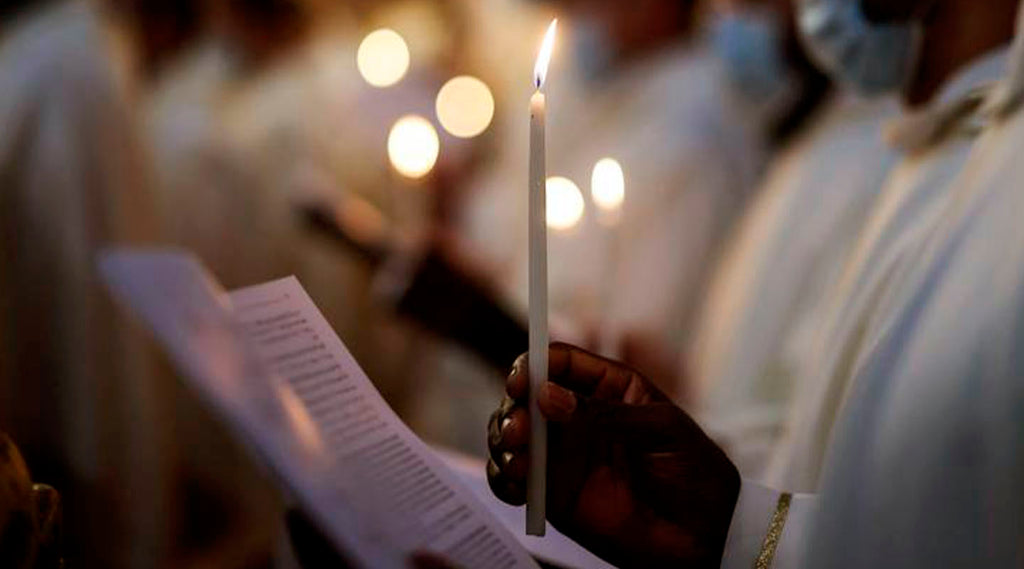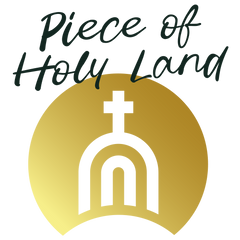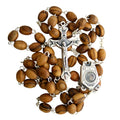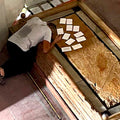The Lord’s Prayer Explained: A Pathway to Deeper Christian Devotion

The Lord’s Prayer, encapsulating the essence of faith and devotion, taught by Jesus to His disciples, is a foundational prayer in every Christian prayer library. Found in the New Testament in both Matthew 6:9-13 and Luke 11:2-4, it is recited by Christians around the world in various languages and forms. The prayer is a guide that addresses every aspect of a believer’s relationship with God: praising His holiness, seeking His will, requesting daily sustenance, asking for forgiveness, and protection from evil.
The Origins and Significance
The Lord’s Prayer is part of Jesus’s Sermon on the Mount in the Gospel of Matthew and His response to a disciple’s request. He provided to his disciple’s with the Lord’s Prayer, which has since become the most widely recited prayer from all Christian prayers in Christianity. The prayer was given as a simple, yet profound example of how to address God, emphasising humility, reverence, and trust. It serves as a model for all prayers, encapsulating themes of reverence, dependence, and surrender to God’s will. Across all Christian traditions, the Lord’s Prayer holds a central place in worship and personal devotion, uniting believers in its profound simplicity and depth.
Jesus provided this prayer to teach His followers how to connect with God in a sincere and meaningful way, avoiding empty repetitions and focusing on genuine communication with the divine.
Different Versions Across Traditions
There are two main versions of the Lord’s Prayer used in Christian worship: the Traditional and Contemporary versions. The Traditional version, familiar to many, begins with “Our Father, who art in heaven, hallowed be thy name.” It uses language reminiscent of the King James Bible, emphasising the grandeur and timelessness of God. The Contemporary version, often used in modern liturgies, uses more current language: “Our Father in heaven, hallowed be your name.” Both versions, despite slight differences in wording, convey the same fundamental messages of faith and devotion.
🙏 The Lord’s Prayer: A Breakdown
The Lord’s Prayer Across Cultures and Languages
The beauty of the Lord’s Prayer lies in its universality. It has been translated into countless languages and adapted into various cultural contexts. For example, there are Aramaic and Hebrew versions that attempt to capture the essence of the prayer as Jesus might have spoken it. Modern adaptations, like the one used in some primary schools, translate the prayer into simple language, making its profound message accessible to children.
The lord’s prayer in Aramaic

The lord’s prayer in Hebrew

The lord’s prayer in Greek

In its original Aramaic, the prayer carries a poetic quality that reflects a deep, mystical understanding of God’s relationship with creation. It emphasises the interconnectedness of all things and the role of divine will in bringing harmony to the universe. This translation highlights the prayer’s roots in the culture and language of Jesus’s time, offering a glimpse into the spiritual world of the early Christians.
Theological and Practical Implications
The Lord’s Prayer serves as a comprehensive model for Christian prayer, teaching believers to prioritise God’s will over their own desires. It encourages a posture of humility, trust, and dependence on God’s provision. By asking for forgiveness and the strength to forgive others, it also fosters a spirit of reconciliation and compassion. This prayer is not just a set of words to be recited; it is a guide for how to live a life aligned with God’s will.
For many Christians, the Lord’s Prayer is a cornerstone of their spiritual practice. It is often recited at the beginning or end of the day, during church services, and in times of personal reflection. The prayer’s structure serves as a reminder of the core aspects of a Christian life: reverence for God, a desire for His will to be done, reliance on His provision, and the importance of forgiveness and spiritual protection.
The Lord’s Prayer in Modern Worship
Today, the Lord’s Prayer continues to be an integral part of Christian worship across denominations. Whether it is chanted in the majestic setting of a cathedral, whispered in a small prayer group, or spoken privately in moments of need, the prayer remains a timeless link between believers and the divine. It is also a significant part of various liturgical traditions, such as the Anglican Book of Common Prayer and the Catholic Mass, where it is often recited collectively, reinforcing the unity of the Church.
Conclusion: A Timeless Guide to Prayer
The Lord’s Prayer, with its profound simplicity and depth, transcends time and culture. It is a prayer that speaks to the human condition, addressing our deepest needs and desires while drawing us closer to God. Whether recited in its traditional form, contemporary adaptation, or in the language of Jesus Himself, the prayer continues to guide believers in their journey of faith, offering a template for how to live a life that honours God and embraces His will. In its enduring words, Christians find comfort, guidance, and the strength to face the challenges of life, knowing that they are in the presence of a loving and faithful Father. 🙏
SHARE:





















